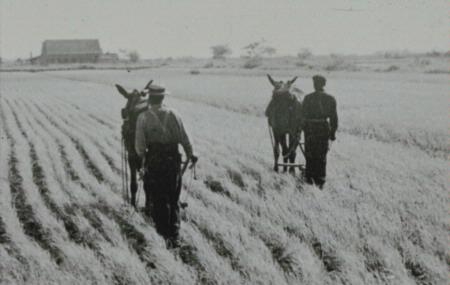
"People have a romantic image of farming in the past," said Alison Van Eenennaam, UC Cooperative Extension specialist in the UC Davis Department of Animal Science. "It may be remembered as bucolic, but there wasn't enough food being produced to cope with world population growth."
Van Eenennaam, an expert in animal genomics and biotechnology, rewrote the song and posed the question, Were those the days?, with historical photos of Americans hand-milking cows one by one, preparing a field with a horse-drawn plow and tossing out handfuls of chicken feed from a bucket.
Van Eenennaam's remake declares,
Those were long days, my friend
We thought they'd never end
We'd plow and toil forever and a day
It's not the life we'd choose
We'd work and never snooze
Those were hard days, oh yes, those were hard days.
Interspersed in the video are statistics that reveal how far modern agriculture has come. For example, the U.S. dairy cattle population peaked at 25.6 million animals in 1944. By 1997, improved dairy management and genetics increased milk production per cow by 370 percent, reducing by more than half the number of dairy cows needed to provide milk for U.S. consumers.
The video notes that, in 1923, it took about 112 days to produce a broiler chicken. In 2000, a much larger chicken is produced in 48 days.
"If you're going to expend resources feeding and housing a happy cow," Van Eenennaam said, "it stands to reason that feeding an efficient, high-producing cow decreases the amount of feed required and waste generated per glass of milk or pound of beef."
Van Eenennaam’s video production is competing in a contest sponsored by the American Society of Animal Science. The video that gets the most “likes” on YouTube before June 1 receives a cash prize and will be shown at the American Society of Animal Science meeting in Phoenix. See the video below, but go to YouTube and sign into your Gmail or YouTube account for your “like” to count.